
Date: July 7, 2021
Location: Lat: 34.37751°, Lon: -51.77409°
Dive depth range: 2,250 - 2,412 meters (7,382 - 7,913 feet)
Access Dive Summary and ROV Data
This ribbon worm was seen swimming in the water column at a depth of 2,330 meters (1.45 miles) during the fourth dive of the 2021 North Atlantic Stepping Stones expedition. Scientists were surprised to see it so far off the seafloor. Video courtesy of NOAA Ocean Exploration, 2021 North Atlantic Stepping Stones: New England and Corner Rise Seamounts. Download largest version (mp4, 27.1 MB).
The fourth dive of the 2021 North Atlantic Stepping Stones expedition marked the first dive within the originally targeted Corner Rise Seamounts, as we explored a site informally named “Dumbbell” Seamount after the shape apparent in the satellite data the team used to guide cruise planning. After collecting high-resolution mapping data overnight, the team selected a dive site that took us to a starting depth of approximately 2,410 meters (7,907 feet).
The geology and geomorphology seen during this dive shared many of the characteristics of the seamounts visited during the previous three expedition dives. Specifically, we observed steep ferromanganese-encrusted rocky slopes, low-relief rock pavements, and slopes covered with variable thicknesses of sediment both biological and volcanic in origin. This was a biologically diverse dive, with walls covered in both a high abundance and high diversity of sponges. Corals observed were primarily soft corals in the genus Chrysogorgia and bamboo corals. Other faunal observations included solitary cup corals, zoanthids, brittle stars, and sea stars. Once again, we saw a limited number of fish and other mobile organisms.
Data collected during this dive on the geology and representative marine life will help scientists to determine the age of the Corner Rise Seamount chain, learn more about the mineral composition of ferromanganese crusts, and extend observations of seafloor life from dives on other seamounts in the region.
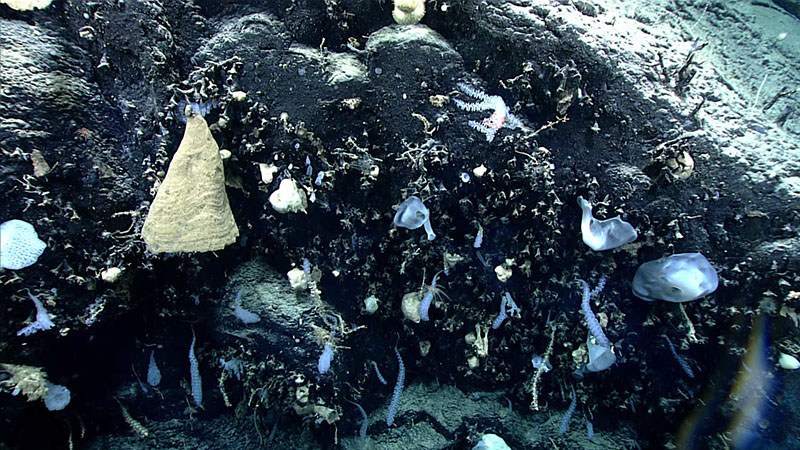
We saw many scenes like this one during the fourth dive of the 2021 North Atlantic Stepping Stones expedition, with a cliff face covered in both living and dead sponges. While they may not look as pretty as their living white counterparts, the brown dead sponge skeletons in this image play an important role in the deep ocean, providing habitat for other organisms. Image courtesy of NOAA Ocean Exploration, 2021 North Atlantic Stepping Stones: New England and Corner Rise Seamounts. Download largest version (jpg, 1.6 MB).
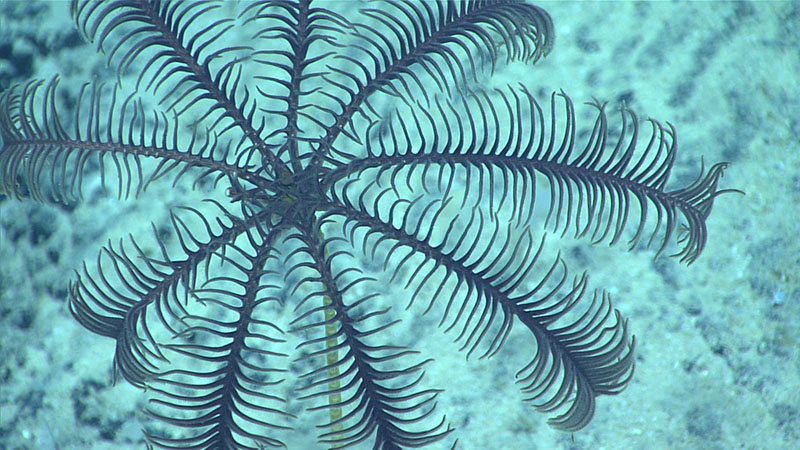
Our on-shore science team was not able to identify this dark red stalked crinoid, seen during Dive 04 of the 2021 North Atlantic Stepping Stones expedition at 2,260 meters (7,415 feet) depth. The crinoid was thus collected as the final sample of the dive. Unlike more traditional sampling operations, during expeditions on NOAA Ship Okeanos Explorer, we collect only a limited number of samples. Samples are collected if they can tell us something new (for example a new species or range extension of a species) or if they enable a broad characterization of physical, chemical, geological, and biological environments in areas of interest. Image courtesy of NOAA Ocean Exploration, 2021 North Atlantic Stepping Stones: New England and Corner Rise Seamounts. Download largest version (jpg, 1.2 MB).
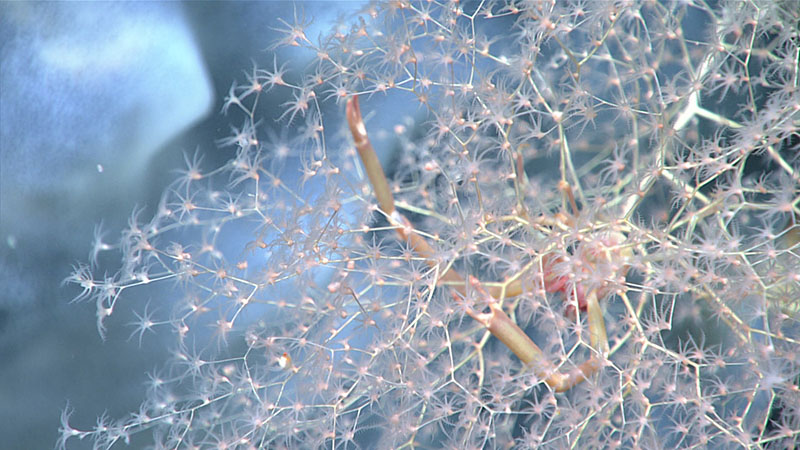
During Dive 04 of the 2021 North Atlantic Stepping Stones expedition, corals in the genus Chrysogorgia were commonly seen with squat lobster associates. Many coral species in this genus have squat lobsters living in their branches and in many cases, the species of squat lobster is specific to the species of coral. Image courtesy of NOAA Ocean Exploration, 2021 North Atlantic Stepping Stones: New England and Corner Rise Seamounts. Download largest version (jpg, 1.1 MB).
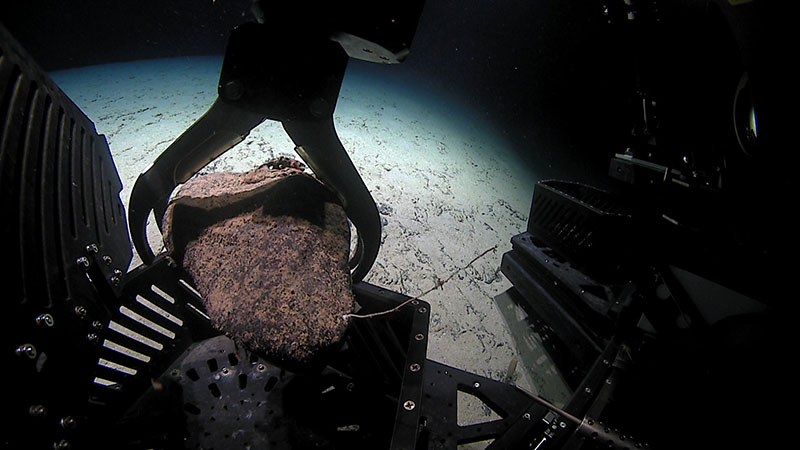
This rock sample was collected during the fourth dive of the 2021 North Atlantic Stepping Stones expedition from a sedimentrock pavement. Geologists speculated that the rock may be ice-rafted debris - also known as a dropstone - from an ancient glacier or volcanic rock that rolled down from further upslope. Image courtesy of NOAA Ocean Exploration, 2021 North Atlantic Stepping Stones: New England and Corner Rise Seamounts. Download largest version (jpg, 725 KB).
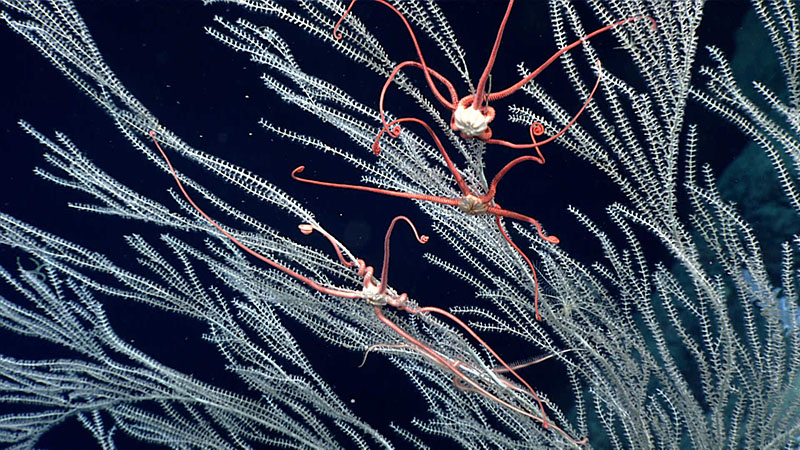
The branches of this primnoid octocoral supported several beautiful brittle stars with their arms outstretched in an effort to catch food floating by in the water column. Image courtesy of NOAA Ocean Exploration, 2021 North Atlantic Stepping Stones: New England and Corner Rise Seamounts. Download largest version (jpg, 1.6 MB).
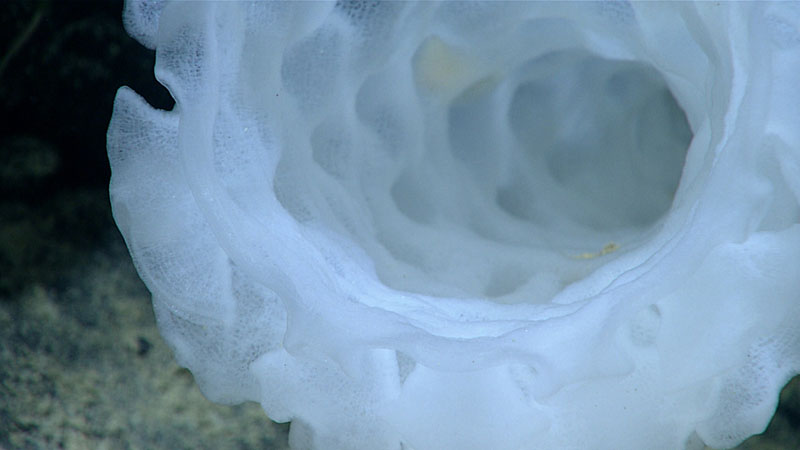
Sponges were the dominant organism seen during the exploration of “Dumbbell” Seamount on Dive 04 of the 2021 North Atlantic Stepping Stones expedition. This image provides a close-up view of the barrel of a hexactinellid glass sponge. Image courtesy of NOAA Ocean Exploration, 2021 North Atlantic Stepping Stones: New England and Corner Rise Seamounts. Download largest version (jpg, 713 KB).
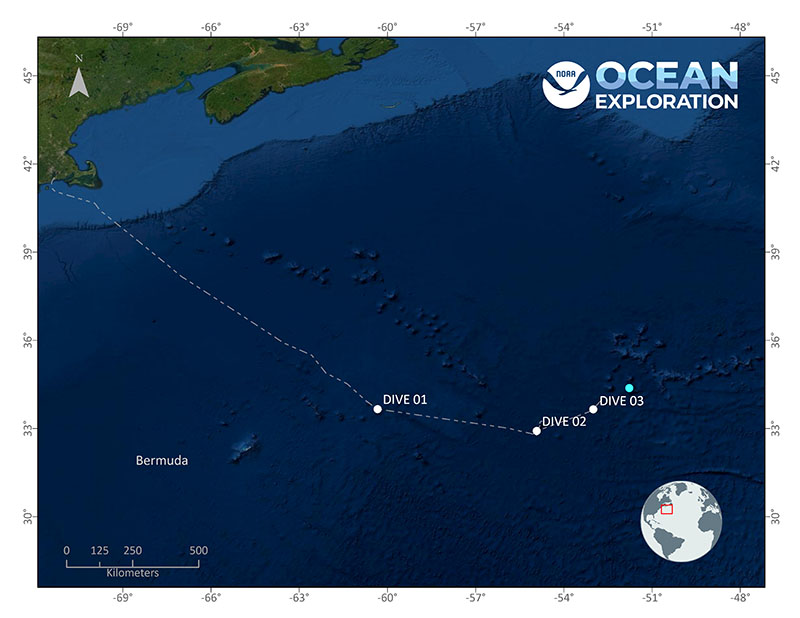
Location of Dive 04 of the 2021 North Atlantic Stepping Stones expedition on July 7, 2021. Map courtesy of NOAA Ocean Exploration, 2021 North Atlantic Stepping Stones: New England and Corner Rise Seamounts. Download largest version (jpg, 2.4 MB).
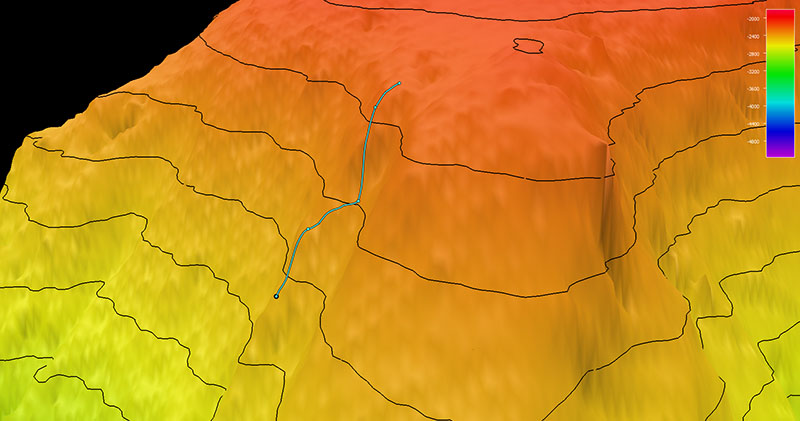
Image showing the dive track of Dive 04 of the 2021 North Atlantic Stepping Stones expedition. Scale is water depth in meters. Image courtesy of NOAA Ocean Exploration, 2021 North Atlantic Stepping Stones: New England and Corner Rise Seamounts. Download largest version (jpg, 768 KB).